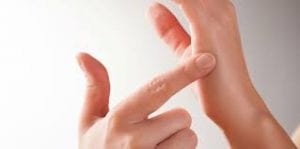This post is also available in: 

EFT for kids and teenagers
Children enjoy EFT, as it is a self-empowering tool, which has many benefits to help them deal with all the stresses of school, including bullying, tests, maths and low self-esteem. A key point with EFT is that it is simple to teach and easy to use, which is why it has been so successful when working with children’s issues.
Now, more than ever before, kids and teenagers are under a lot of stress. They are dealing with the trauma of being bullied, pressure to perform well, low self-esteem, parents splitting up. They don’t always know who to talk to or, importantly, realise that they need to talk.
EFT will help children help themselves. In using it they will feel more relaxed and better about themselves. They can use it anywhere and anytime and it can be fun too! Children thrive on role-play and have vivid imaginations which are excellent resources when using EFT.
After following one of Anne Siret’s workshop a mother wrote:
“Hi Anne,
I came home and we had dinner, then B. and I picked a teddy and practiced tapping and went through the steps. We went through the steps/tapping at shower time and again in bed and she was relaxed and happy, I was so excited. She fell asleep well.
I’m going to move things around on sun 23rd so B. and I can both come. We will keep practicing everyday until then. See you at 3:30pm.
I really enjoyed today.
Thanks
L.”
.
When EFT is introduced into a school.
Expected outcomes for children:
- Improved marks/grades. Improves reading and writing confidence.
- Better behavior in and out of the classroom.
- Improved emotional intelligence.
- Higher self-esteem.
- Peer pressure management tools and /or
- Bullying management tools.
- Lowers anger and stress levels to a feeling of calm.
- Eliminates bed wetting /nail biting /nightmares /phobias.
- Eliminates anxiety/nerves, leading to increase in performance.
- Improvement in health (less days off).
- Nervous system and immune system functions better.
- Increased self control.
- Improvement in performance (sports).
- More likely to make healthier eating choices.
- Increased self awareness and therefore…more responsible and accountable for own actions/behaviour/emotions.
- Increase in optimism.
- Less likely to develop eating disorders /depression.
- Lowers intensity of pain when children are injured.
- Encourages personal responsibility.
- Reduces or eliminates fear of not feeling confident or not having the skills to complete a task.
- Eliminates fear of water – suitable before swimming.
- …
Expected Outcomes For Parents:
- Lowers intensity of pain when children are injured.
- Encourages self-management.
- Personal stress management tool.
- Allows parents to empower their children.
- Creates a “team” approach i.e. we’re all in this together & this is one way we support each other.
- Opens discussion “I wonder what would happen if we tap about this? What could we say? How do you want to feel /be?”.
- An option when children do not want to go to school ~ it could enable parents to understand where the resistance originates.
- …

